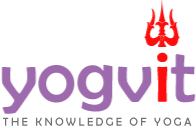How to experience Yoga to the fullest
Although the popularity of yoga is exploding in the West, it’s essential that you have a solid understanding of what yoga is about in order to benefit the most from your yoga practice. Yoga has been scientifically proven to reduce stress and improve overall well-being when practiced mindfully.
The philosophy of yoga imparts invaluable lessons and provides us with lifelong tools to accept what is, whether it be illuminating or uncomfortable. The cultivated ability to see ourselves, life and others is what ultimately supports us in cultivating a balance among ups and downs, and everything in between.
The asana (physical pose) practice is merely one of eight “limbs” of yoga. The other best practices include regulated breath, the way we conduct ourselves in life, the practice of self-discipline and meditation that results in enlightenment or feeling complete. The mere movement in and out of postures in tandem with rhythmic breathing provides a stable launching pad for enhanced mind-body connection, thus transforming ourselves – physical as well as spiritual from the inside out.
Although it can be fulfilling to get on a mat and try our best, it is also imperative to account for not only our poses but also the way we’re transitioning and our deep breaths. Very much essential if we are serious about sustaining our minds and bodies over time. The mere achievement of a full lotus or the many complicated arm balances should never be the goal, but the knowledge of which can give us the tools to last a lifetime.
Prior to hitting the yoga mat in earnest, here is some important advice to help deepen your yoga practice and result in a higher, more fulfilling mind-body connection.
All urbanites should be well experienced with “rushing to relax,” or running hither and tither just to make it on time. This may have you have step onto your mat flooded by to-do lists, internal turmoil, and so on. We are all human, not machines, and thus natural to enjoy thoughts. Yoga helps us observe our thoughts objectively – as they come and go – practice resting or at least identify the thoughts that come up for what they are.
Do that which feels appropriate at the time. It can be anything – a traditional phrase or something as simple and empowering as “I can do this.” Retain the attention on what you are doing for as long as possible. Be aware of when your mind starts to stray and force it back over and over again.
Learn to trust your body—It is incredibly intelligent. If a posture or transition causes pain, back off. The more attention we pay to the moment, concentrating on the quality of our breath and body transitions can be tremendously impacted by creating a more meditative and beneficial environment.
Related Post: YOGA FOR EVERYONE!
YOGA TEACHER TRAINING INDIA


